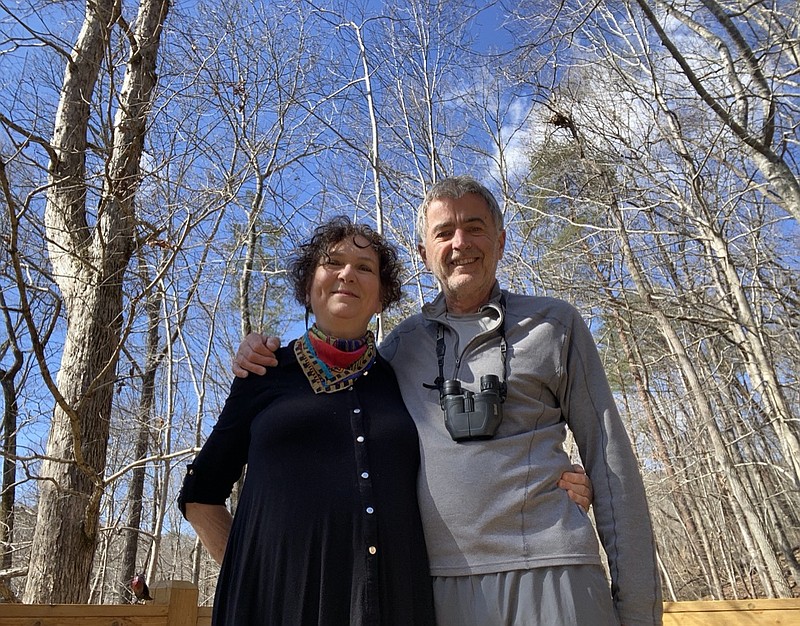Ruth Pearl and Ken Elliott became birders in Africa.
"It was bird heaven, so colorful and varied," says Ken. "There were so many that we started taking a bird book everywhere we went."
Born in England, the married couple spent a few years in Africa, where Ken, now retired, was working as an aviation engineer.
Ruth, an artist, remembers the iridescent, long-beaked sunbirds, which are like hummingbirds but bigger, of Kenya. And Ken says he was partial to the green and yellow little bee-eaters that would flock outside of their home.
In 1990, when they left Africa to move to the United States - again, for Ken's work - they worried their best birding days were behind them.
But, Ken learned, "you just had to know where to look."
Eventually, they landed in Chickamauga, Georgia, at the foothills of Lookout Mountain, where they've spent the past five years. Their Cloudland Station home is located on a steep lot, densely wooded with mature trees, rock outcroppings and a waterfall. And they were delighted to discover it fluttered with life.
Ruth and Ken have now recorded 75 unique bird species in their backyard and around their neighborhood. And for Ruth, who studied fine art in England, it's become more than a hobby - it's become her muse, too. Each year, Ruth says that she and a cousin in the United Kingdom exchange calendars of their unique geographic areas. Last year, Ruth put together a calendar featuring her own art, scenes from around Cloudland Station. This year, she says she is working on one to highlight her neighborhood birds.
They've seen brown thrashers foraging in leaf litter, summer tanagers high in the tree canopy, killdeer nesting along their dirt road and even a belted kingfisher - which took them both by surprise.
"I've always associated kingfishers with tropical climates, so we struggled to ID that one for a while," says Ken, who admits that he and Ruth are still learning about North American species - and that's part of the fun.
Whenever they spot a new bird, they make mental notes of its size, color, beak shape and habitat, in addition to the time of year. Then, they look it up in the National Audubon Society's Guide to North American Birds. If the ID isn't obvious, Ken says, they try to record its call to cross-reference it on YouTube.
"We only put them on the list when we have positively identified them," says Ruth.
Among the 75 species on their Excel spreadsheet, they say there are a few worthy of extra recognition. Here, they share their "species superlatives."
Best looking: Red-headed woodpecker
Best song: Carolina chickadee
People are probably more familiar with the chickadee's call, says Ken, which usually serves as an alarm - short and simple. But its song - longer and more complex - is beautiful and melodic. "It reminds me of the tinkerbird in Africa," he says.
Most annoying: Northern cardinal
"We have a male cardinal that constantly attacks the mirrors on our cars. We had to put plastic bags with elastic bands over them," says Ken.
"And now," Ruth adds, "it attacks the windows of the house."
Bird that always makes you smile: Wild turkey
Most difficult bird to identify: Any warbler
"The only three we currently have down are the yellow-throated, black-throated green and pine," says Ken.
Bird you hope to one day add to your list: Bald eagle
Last bird listed: Great horned owl
